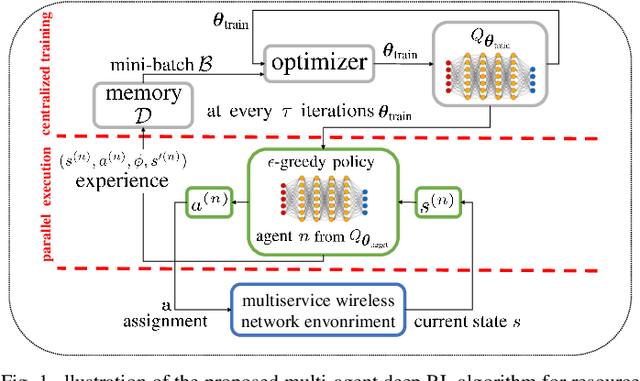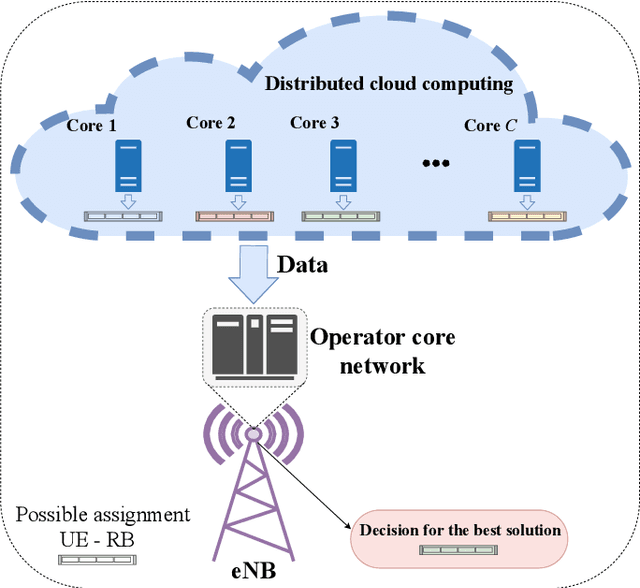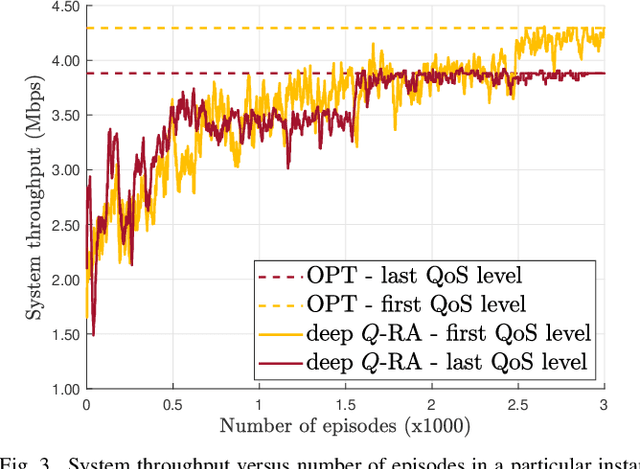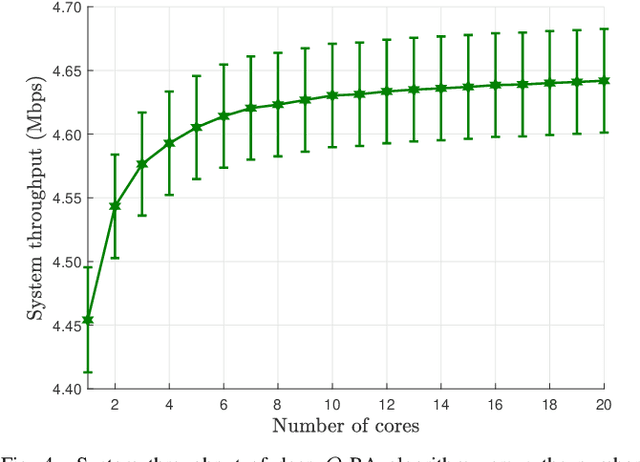Walter C. Freitas Jr.
A Distributed Game-Theoretic Solution for Power Management in the Uplink of Cell-Free Systems
Dec 28, 2022Abstract:This paper investigates cell-free massive multiple input multiple output systems with a particular focus on uplink power allocation. In these systems, uplink power control is highly non-trivial, since a single user terminal is associated with multiple intended receiving base stations. In addition, in cell-free systems, distributed power control schemes that address the inherent spectral and energy efficiency targets are desirable. By utilizing tools from game theory, we formulate our proposal as a noncooperative game, and using the best-response dynamics, we obtain a distributed power control mechanism. To ensure that this power control game converges to a Nash equilibrium, we apply the theory of potential games. Differently from existing gamebased schemes, interestingly, our proposed potential function has a scalar parameter that controls the power usage of the users. Numerical results confirm that the proposed approach improves the use of the energy stored in the battery of user terminals and balances between spectral and energy efficiency.
Deep Reinforcement Learning for QoS-Constrained Resource Allocation in Multiservice Networks
Mar 03, 2020



Abstract:In this article, we study a Radio Resource Allocation (RRA) that was formulated as a non-convex optimization problem whose main aim is to maximize the spectral efficiency subject to satisfaction guarantees in multiservice wireless systems. This problem has already been previously investigated in the literature and efficient heuristics have been proposed. However, in order to assess the performance of Machine Learning (ML) algorithms when solving optimization problems in the context of RRA, we revisit that problem and propose a solution based on a Reinforcement Learning (RL) framework. Specifically, a distributed optimization method based on multi-agent deep RL is developed, where each agent makes its decisions to find a policy by interacting with the local environment, until reaching convergence. Thus, this article focuses on an application of RL and our main proposal consists in a new deep RL based approach to jointly deal with RRA, satisfaction guarantees and Quality of Service (QoS) constraints in multiservice celular networks. Lastly, through computational simulations we compare the state-of-art solutions of the literature with our proposal and we show a near optimal performance of the latter in terms of throughput and outage rate.
 Add to Chrome
Add to Chrome Add to Firefox
Add to Firefox Add to Edge
Add to Edge